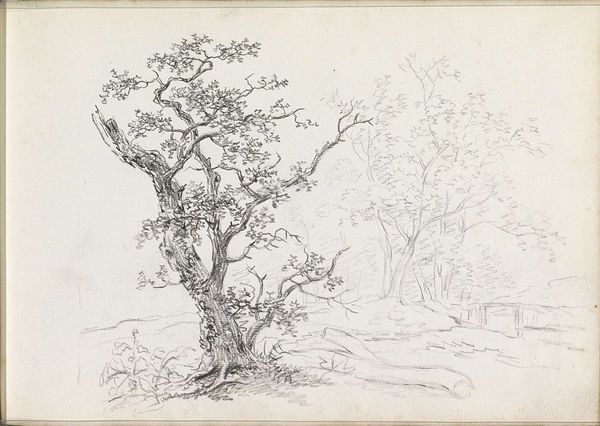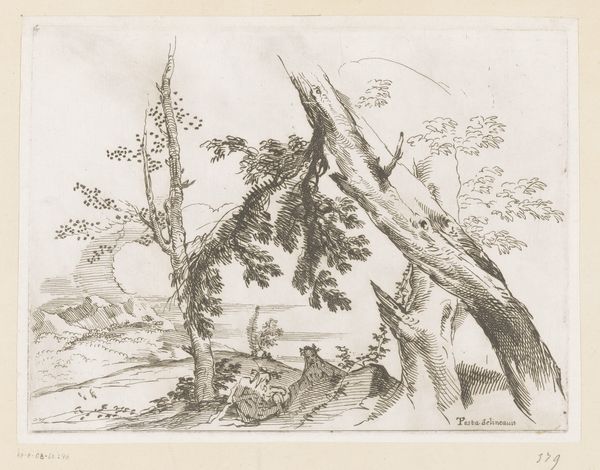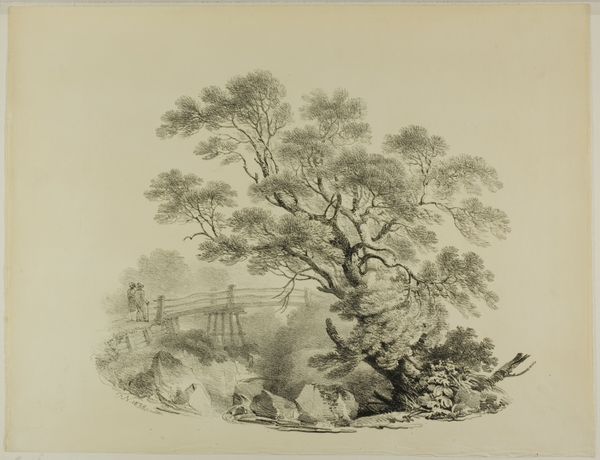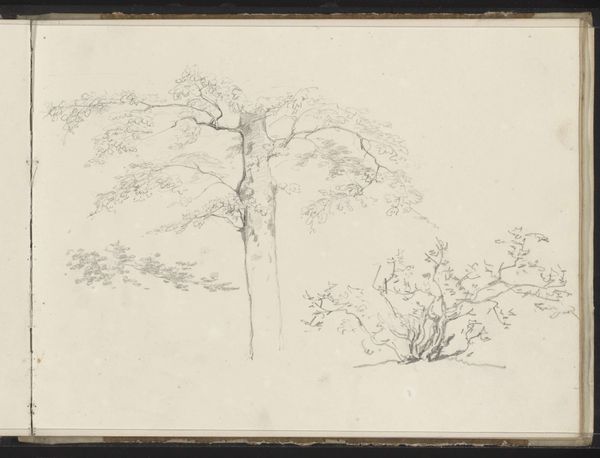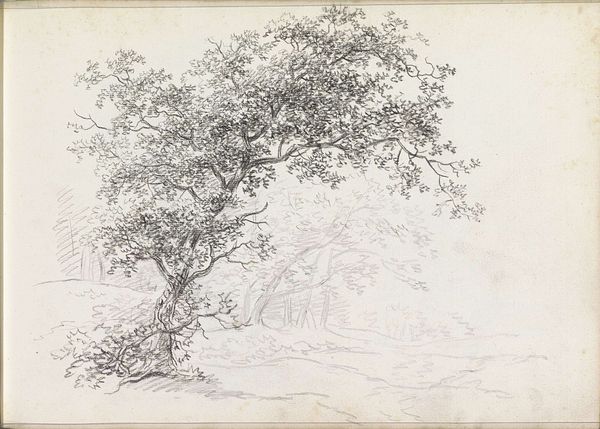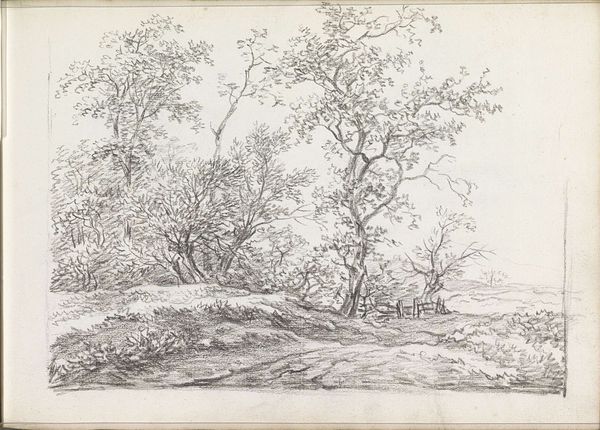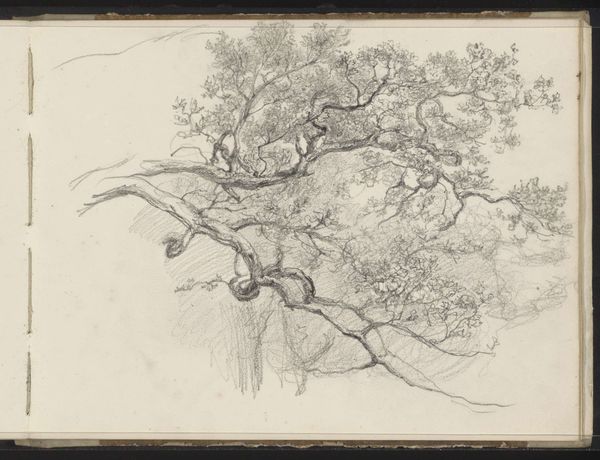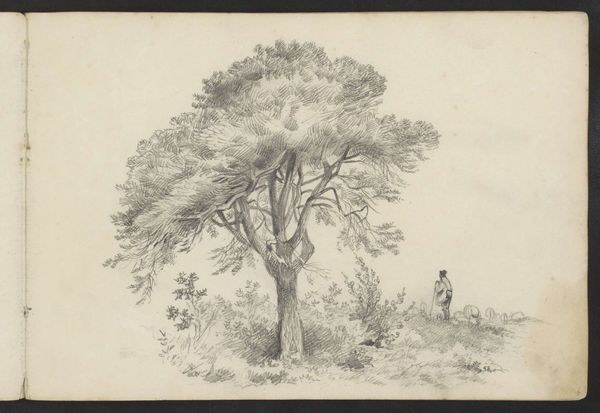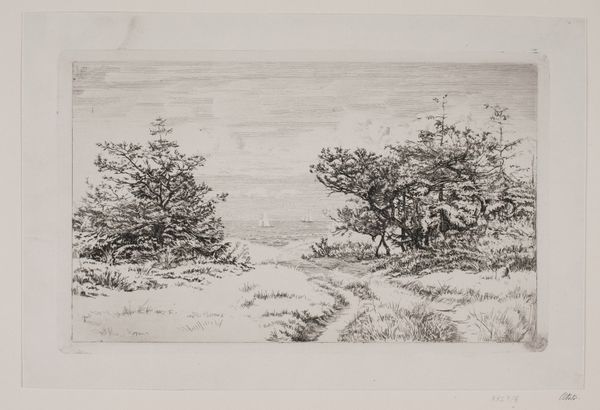
drawing, lithograph, print, etching, paper
#
drawing
#
lithograph
# print
#
etching
#
landscape
#
etching
#
paper
#
romanticism
Dimensions: 188 × 267 mm (image); 274 × 380 mm (sheet)
Copyright: Public Domain
Editor: This is "Trees and Rocks by Water" by Johann Christian Klengel, dating from the 19th century. It’s a lovely little drawing, print, or etching... actually, looks like it might be all of those things combined! It’s so delicate, almost dreamlike. What stands out to you when you look at this piece? Curator: It’s the quietude, isn't it? The whispering silence. The piece evokes a time when artists sought refuge in the natural world, finding solace and inspiration far from the noise of cities. Imagine Klengel, sketchbook in hand, perched by the water’s edge, meticulously capturing the dance of light on leaves. Editor: I can almost hear the water trickling. Is that sense of calm typical of landscape art from that period? Curator: The Romanticism of the 19th century was all about emotional connection with nature; it offered a sanctuary from the burgeoning industrial world. There’s a deliberate attempt to portray the sublimity of nature. But, tell me, what does "sublimity" *feel* like to you when you gaze upon these etched lines? Editor: It feels vast, but also very personal. It’s like I’ve stumbled upon Klengel’s secret little haven, you know? Is that common for landscapes? To feel so private? Curator: Absolutely! The personal and subjective experiences became central themes. It’s less about topographical accuracy and more about conveying an emotional experience, something deeply personal. Perhaps even revealing. Klengel shares not just a scene, but a feeling. Editor: So, it’s less about what the artist *saw* and more about what they *felt*. That changes everything, really. Curator: Precisely. Art becomes a conduit for emotion. A portal, if you will. Which is why a simple etching of trees and rocks can speak volumes to us centuries later. Isn't it wondrous? Editor: It really is. I'll definitely see landscapes in a whole new way after this. Thanks so much!
Comments
No comments
Be the first to comment and join the conversation on the ultimate creative platform.
